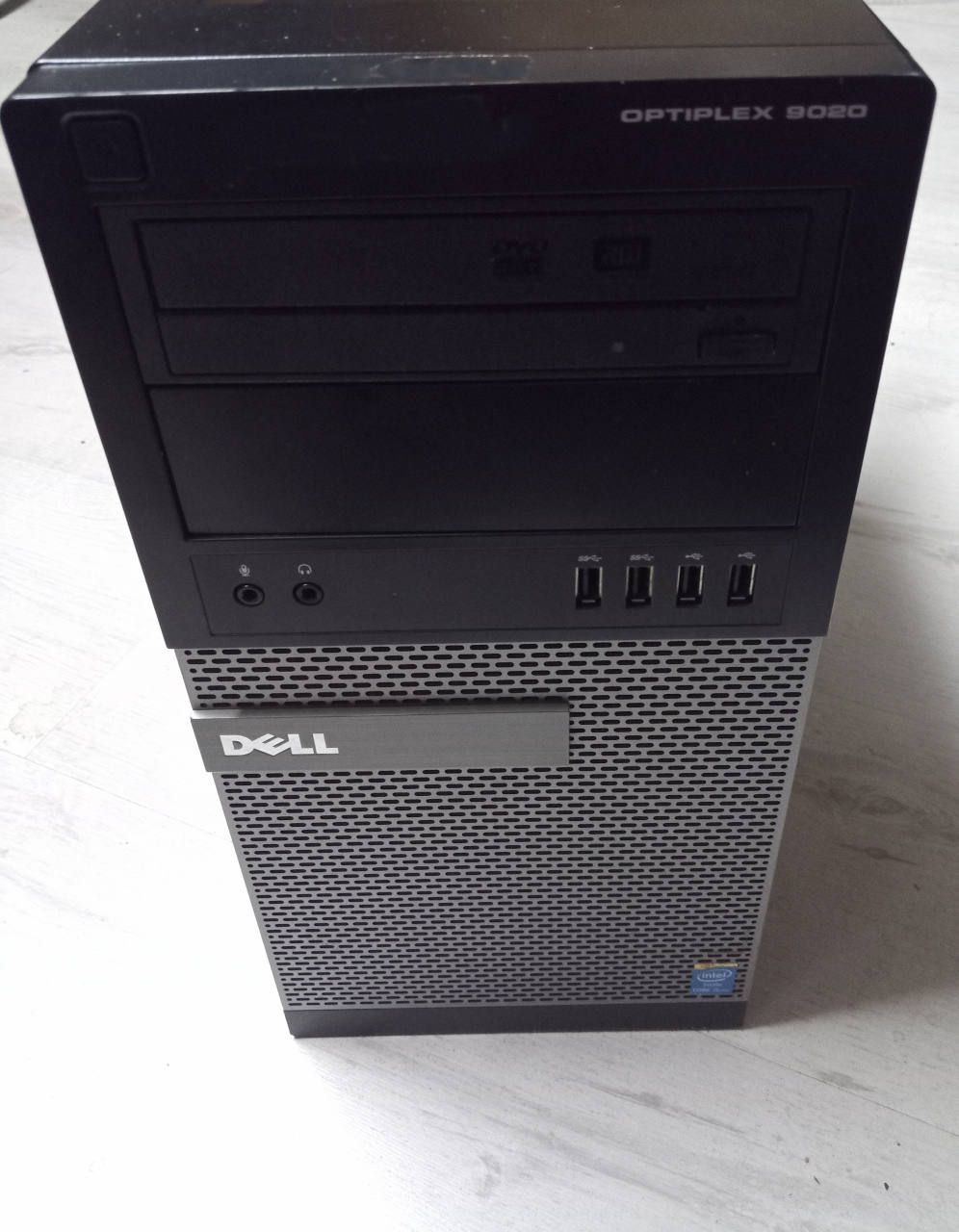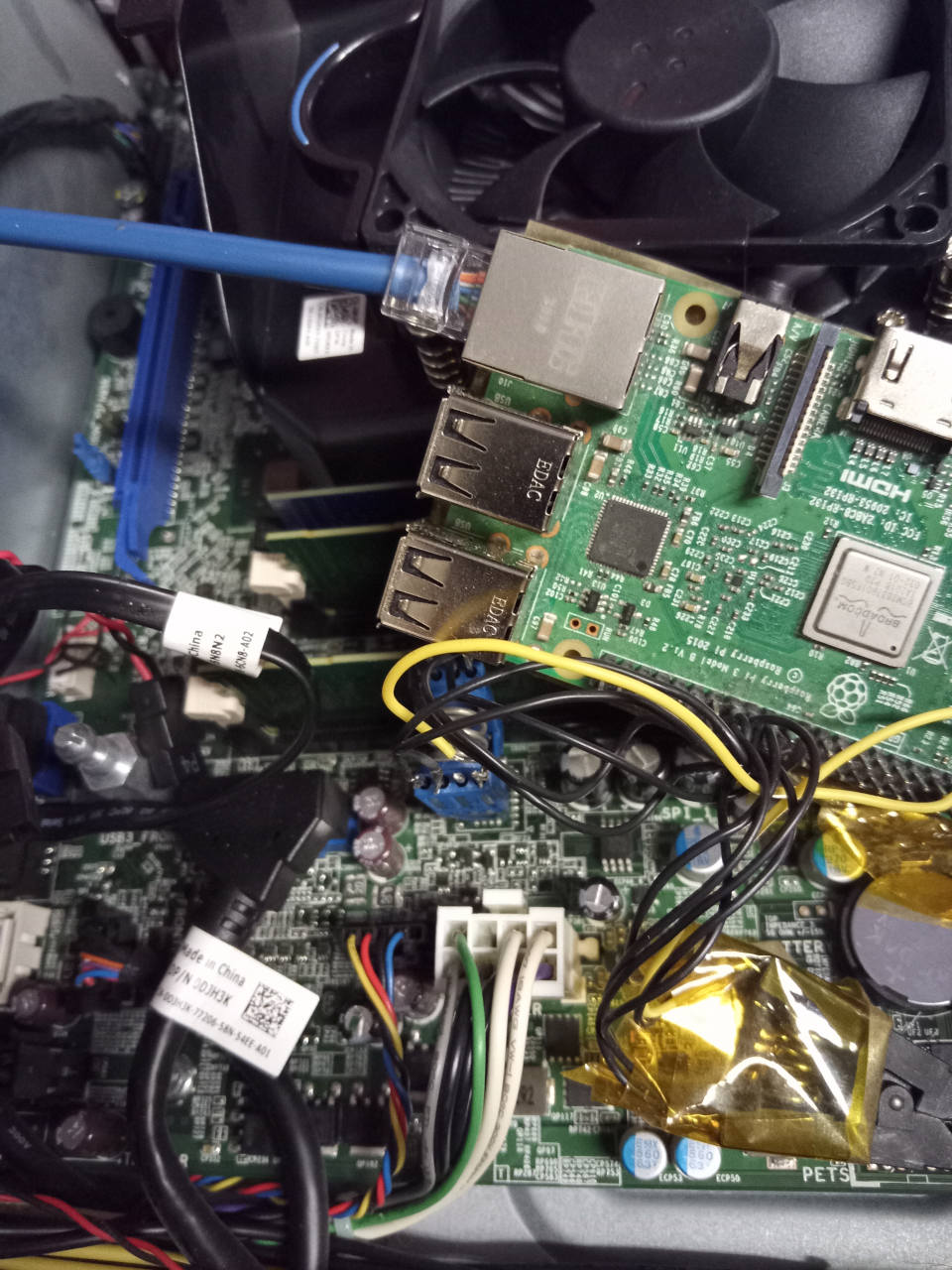PLEASE READ THESE INSTRUCTIONS BEFORE INSTALLING, OR YOU MAY BRICK YOUR MACHINE!! - Please click the link and follow the instructions there, before flashing. For posterity, here is the link again.












| Specifications | |
|---|---|
| Manufacturer | Dell |
| Name | OptiPlex 9020 SFF/MT |
| Variants | OptiPlex 9020/7020/Xe2/T1700 SFF/MT |
| Chipset | Intel Q87 Express (C226 for T1700) |
| CPU | Intel Haswell |
| Graphics | Intel HD Graphics |
| Memory | DDR3 DIMMs (max 32GB, 4x8GB) |
| Architecture | x86_64 |
| Original boot firmware | Dell UEFI firmware |
| Intel ME/AMD PSP | Present. Can be disabled with me_cleaner. |
| Flash chip | 2x SOIC-8, 12MiB (8+4) (96Mbit) |
W+: Works without vendor firmware;
N: Doesn't work;
W*: Works with vendor firmware;
U: Untested;
P+: Partially works;
P*: Partially works with vendor firmware
?: UNKNOWN AT THIS TIME| Features | |
|---|---|
| Internal flashing with original boot firmware | W+ |
| Display (if Intel GPU) | W+ |
| Display (discrete GPU, SeaBIOS payload only) | W* |
| Audio | W+ |
| RAM Init | W+ |
| Payloads supported | |
|---|---|
| GRUB (libgfxinit only) | Works |
| SeaBIOS | Works |
| SeaBIOS with GRUB | Works |
Open source BIOS/UEFI firmware
This document will teach you how to install Libreboot, on your Dell OptiPlex 9020/7020/XE2/T1700 SFF/MT desktop motherboard. Libreboot is a Free Software project that replaces proprietary BIOS/UEFI firmware.
Unavailable in Libreboot 20240126 or earlier. You must compile from source, or use a version newer than Libreboot 20240126
Official information about this machine can be found here: https://i.dell.com/sites/doccontent/shared-content/data-sheets/en/Documents/optiplex-9020-micro-technical-spec-sheet.pdf
ECC memory support
The T1700 has ECC memory support with bmrc (Broadwell Memory Reference Code) only, with nri (Native Ram Init) not (yet).
Buy Libreboot preinstalled
You can buy this machine professionally serviced, with Libreboot preinstalled and your choice of Linux/BSD system. Many upgrades are also available. See:
Minifree now sells the Libreboot 3050 Micro, instead of the Libreboot 9020 SFF. See: https://minifree.org/product/libreboot-3050-micro/
Sales are conducted to provide funding for the Libreboot project. Leah Rowe who runs Minifree, is also Libreboot’s founder and lead developer.
Patch
Mate Kukri is the author of the original coreboot port. Thanks go to Kukri. Kukri’s patch is here:
https://review.coreboot.org/c/coreboot/+/55232/31
This patch, at this revision (patchset 31), is what Libreboot uses for this port.
QUBES: how to get it working
Qubes requires IOMMU to be turned on. Please now read the next section. Qubes WILL work, if you configure Libreboot as directed below, but otherwise it will fail by default. This is because Libreboot disables the IOMMU by default, on this board.
Graphics cards and IOMMU
IOMMU is buggy for some reason (we don’t know why yet), when you plug in a graphics card. The graphics card simply won’t work. On some of them, you can use the console but as soon as you start xorg/wayland, it will just b0rk.
Current Libreboot revisions disable IOMMU by default, on this board. The coreboot code for initialising IOMMU was modified by the Libreboot project, to make it a toggle. IOMMU works fine if you use only Intel graphics.
If you want to use IOMMU with a graphics card, you also can. Use this Linux kernel option at boot:
intel_iommu=enable,igfx_offWith the above option, IOMMU is enabled except for the Intel GPU. However, Libreboot also disables the Intel GPU in coreboot, entirely, when a graphics card is used. With the above option, it’s possible that something like Qubes may work, which requires an IOMMU to be turned on.
If you are using Intel graphics, and not a graphics card, you can ignore the above, and instead fully turn on the IOMMU, without any special kernel options.
The way coreboot works is this: if vt-d is present on the CPU, it enables an IOMMU, and only if vt-d is present. This is still the behaviour in Libreboot, but Libreboot adds an additional check: if iommu is not set in nvram, it defaults to on, but if it’s set to disabled, then IOMMU is not initialised.
Enable IOMMU
IOMMU is disabled by default, universally, on this board. You can turn it on, by modifying the ROM image prior to flashing, or modifying it prior to re-flashing.
On all other Haswell boards, LIbreboot enables IOMMU by default. To enable it on these boards, do this on your ROM:
nvramtool -C libreboot.rom -w iommu=EnableIf you’re using a graphics card, please make sure to read the above notes about how to use IOMMU; specifically, the part that talks about Linux kernel option intel_iommu=enable,igfx_off
Then flash the ROM image. You can find nvramtool under src/coreboot/default/util/nvramtool. Do this in lbmk if you don’t already havse src/coreboot/default/:
./mk -f coreboot defaultThen do this:
make -C src/coreboot/default/util/nvramtoolThe binary nvramtool will then live in that directory. More information available in Libreboot build instructions. Information about dumping/flashing the ROM can be found in Libreboot flashing instructions and Libreboot external flashing instructions.
NOTE: If IOMMU is enabled, you can still use a graphics card, but you must pass this on the Linux cmdline paramaters: iommu=off - or if you need IOMMU (e.g. for Qubes), use intel_iommu=enable,igfx_off instead.
NOTE2: Libreboot uses a static option table on all boards that have nvram, which is why you must use the -C option on your ROM, to change the static table that is baked into it.
Here is an example of the type of errors we got when testing graphics cards with IOMMU enabled:
https://av.vimuser.org/error.jpg
Make sure to configure your image accordingly.
Build ROM image from source
With Native Ram Init (Recommended!):
For the MT variants:
./mk -b coreboot dell9020mt_nri_12mbFor the SFF variants:
./mk -b coreboot dell9020sff_nri_12mbWith brmc (for ECC support on the T1700 boards only):
T1700 MT:
./mk -b coreboot t1700mt_bmrc_12mbT1700 SFF:
./mk -b coreboot t1700sff_bmrc_12mbIt is important that you choose the right one. The MT variant is the full MTX tower.
Installation
Insert binary files
If you’re using a release ROM, please ensure that you’ve inserted extra firmware required refer to the guide for that. (failure to adhere to this advice will result in a bricked machine)
Libreboot’s build system automatically downloads and processes these files if you build Libreboot from source, but the same logic that it uses must be re-run if you’re using a release image.
Set MAC address
This platform uses an Intel Flash Descriptor, and defines an Intel GbE NVM region. As such, release/build ROMs will contain the same MAC address. To change the MAC address, please read nvmutil documentation.
Flash a ROM image (software)
If you’re already running Libreboot, and you don’t have flash protection turned on, internal flashing is possible.
Internal flashing can also be done with the original Dell BIOS, if the SERVICE_MODE jumper near the PCIe slots is installed. Before flashing,
rmmod spi-intel-platformneeds to be run to prevent errors. Once Libreboot is installed, the SERVICE_MODE jumper can be removed.
Note: The Dell BIOS can write EFI variables to flash when shutting down, which could corrupt the newly flashed Libreboot ROM and render the system unusable. To prevent this, after flashing internally from the original Dell BIOS, remove power from the computer instead of shutting it down normally. It’s recommended to use a live USB instead of the internal drive to prevent potential filesystem corruption.
Flash a ROM image (hardware)
REMOVE all power sources and connectors from the machine, before doing this. This is to prevent short circuiting and power surges while flashing.
For general information, please refer to 25xx NOR flash instructions - that page refers to use of socketed flash.
There are two SOIC-8 chips. You can split up your 12MB ROM image like so:
dd if=libreboot.rom of=4mb.rom bs=1M skip=8
dd if=libreboot.rom of=8mb.rom bs=1M count=8The side cover comes off easily, and you can find the flash ICs next to the RAM.
Here’s the SOIC8 ICs being flashed:




Enjoy!
The Canoeboot version of this page is: https://canoeboot.org/docs/install/dell9020.html
Markdown file for this page: https://libreboot.org/docs/install/dell9020.md
This HTML page was generated by the Libreboot Static Site Generator.